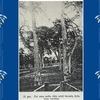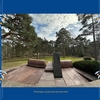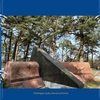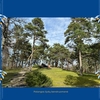EN:
It is believed that the first Jews settled in Palanga in the middle of the 16th century. In 1586, the tenant of the town of Palanga was a Jew named Kasper Samuelovich. Nevertheless, a more significant Jewish settlement in Palanga likely began after 1639, when Vladislav Vaza, the ruler of Lithuania, granted the Jews of Palanga and Gargždai the privilege of legally residing and conducting business in these towns. In 1662, about 40 Jewish families lived in the town. The wars of the early 18th century slowed down the growth of the town and the Jewish community. According to the 1756 inventory, Jews owned only 13 plots of land in Palanga. In the 18th century, a "Jewish town" began to form on the northern bank of the Rąžė stream, where a synagogue stood. In 1902, a red brick synagogue was built, and schools, Zionist organizations, and the Makabi sports club operated there. At the turn of the 19th and 20th centuries, Jews made up almost half of Palanga’s population, and their businesses – ranging from trade and crafts to amber workshops, guesthouses, and restaurants – contributed to the development of the resort.
It is known that in 1487, the Jewish burial society Hevra Kadisha operated in Palanga, which suggests that Jews lived in Palanga as early as the second half of the 15th century. In 1540, Sigismund the Old, Grand Duke of Lithuania and King of Poland, granted Jews the privilege of building the first synagogue and other sacred buildings in Palanga. It is said that in the same year, a cemetery was established in the territory of the current Palanga Manor Park.
Burials in the cemetery ceased in 1892 before the creation of the Tiškevičius Park. In 1830, the old cemetery records were lost in a fire. There are surviving photographs showing a fragment of the former cemetery fence.
In 1981, the sculptural composition "Šaulys" (The Archer) was installed. It was created by sculptor Steponas Šarapovas (1936–1981) and architect Algis Juozas Knyva (1934–2023).
Photos from Palanga Jewish community
LT:
Manoma, kad pirmieji pavieniai žydai Palangoje apsigyveno dar XVI a. viduryje. 1586 m. Palangos miestelio nuomininkas buvo žydas Kasperas Samuelovičius. Nepaisant to, tikėtina, jog gausesnis žydų įsikūrimas Palangoje prasidėjo po 1639 m., valdovui Vladislovui Vazai Palangos ir Gargždų žydams suteikus privilegiją, leidusią teisėtai gyventi ir verstis šiuose miesteliuose. 1662 m. miestelyje gyveno apie 40 žydų šeimų. XVIII a. pradžios karai pristabdė miestelio, o kartu ir žydų bendruomenės augimą - pagal 1756 m. inventorių Palangoje žydams priklausė vos 13 sklypų. XVIII a. pradėta formuoti „Žydų miesto“ dalis šiauriniame Rąžės upelio krante, kur stovėjo sinagoga. 1902 m. pastatyta mūrinė raudonų plytų sinagoga, veikė mokyklos, sionistinės organizacijos, sporto draugija „Makabi“. XIX–XX a. sandūroje žydai sudarė beveik pusę Palangos gyventojų, jų verslai – nuo prekybos ir amatų iki gintaro dirbtuvių, pensionatų, restoranų – prisidėjo prie kurorto plėtros.
Yra žinoma, kad 1487 m. Palangoje veikė žydų laidojimo brolija Hevra Kadiša, kas leistų teigti, jog žydai Palangoje gyveno jau XV a. II pusėje. 1540 m. Lietuvos didysis kunigaikštis ir Lenkijos karalius Žygimantas Senasis suteikė žydams privilegiją statyti pirmąją sinagogą ir kitus sakralinius statinius Palangoje. Teigiama, jog tais pačiais metais buvo įkurtos kapinės dabartinėje Palangos dvaro sodybos parko teritorijoje.
Kapinėse nebelaidojama nuo 1892 m. prieš pradedant kurti grafų Tiškevičių parką. 1830 m. per gaisrą senieji kapinių registrai buvo prarasti. Yra išlikę nuotraukų, kuriose matyti buvusių kapinių tvoros fragmentas.
1981 m. įrengta „Šaulio“ skulptūrinė kompozicija. Jos autorius – skulptorius Steponas Šarapovas (1936–1981), o architektas – Algis Juozas Knyva (1934–2023).
Palangos žydų bendruomenės nuotraukos



